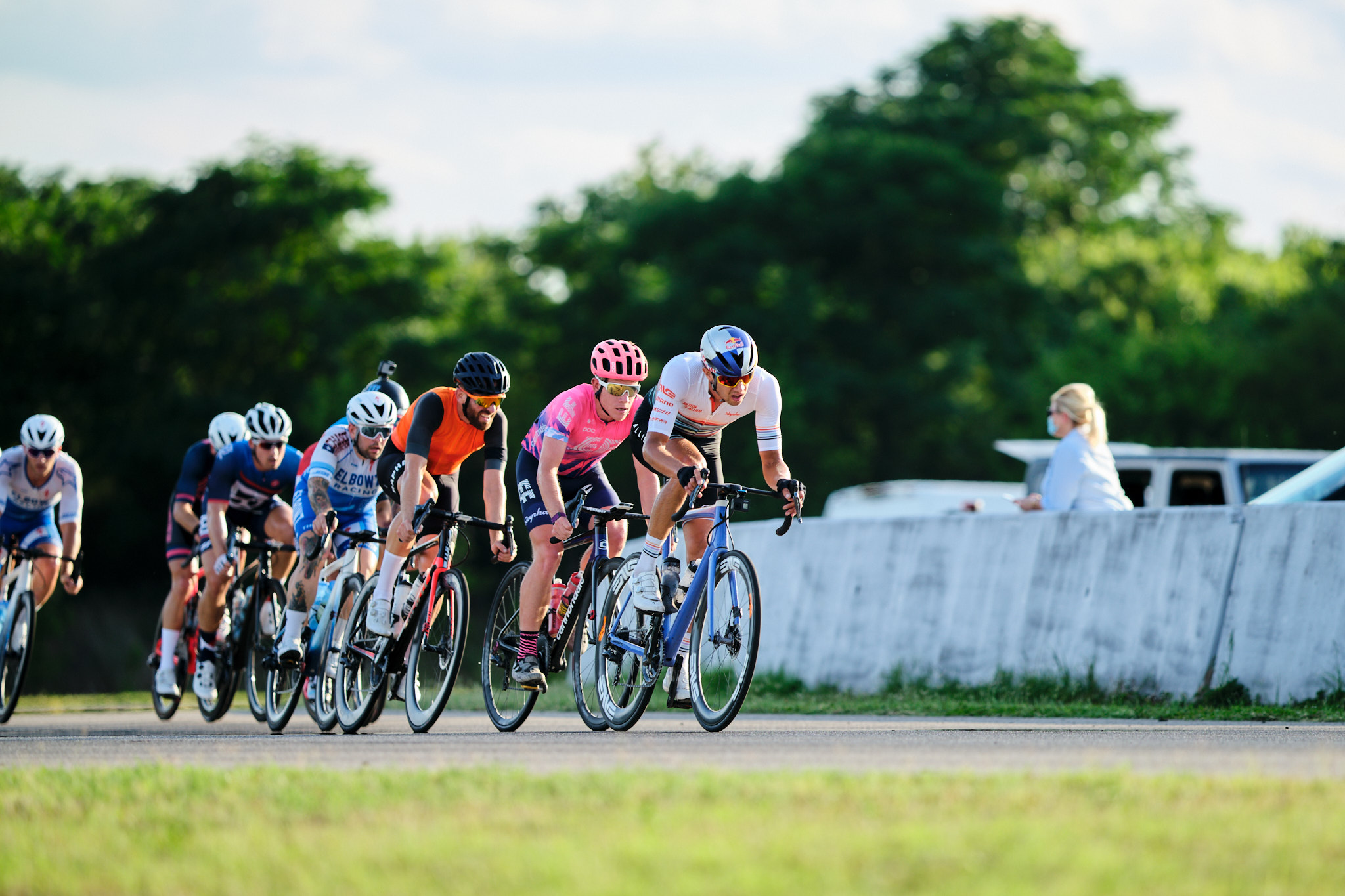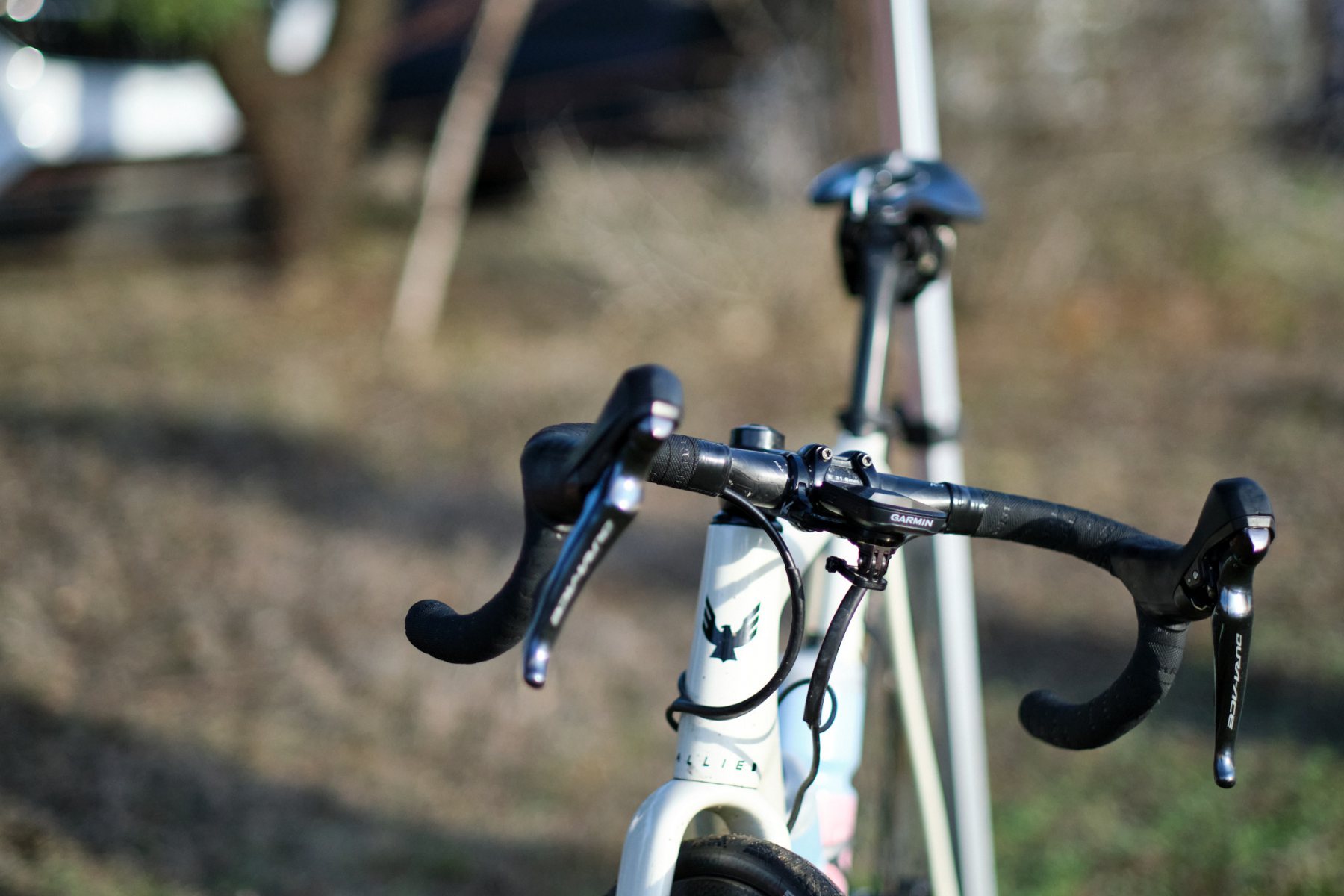Like so many things, it was through a random Instagram post that I discovered Red Rock Roubaix, a 110-mile gravel ride that was to take place on a January weekend in Austin. Some googling revealed the event’s history, but I couldn’t find much about the 2020 rendition, and whether the circle of invited guests extended to me was not yet obvious. Nonetheless, I marked it on my calendar and waited.
The ride was hosted by BTC (Beat the Clock) Cycling, a club local to Austin, though probably nationally recognized by those who follow cycling Instagram. The Austin bicycling community does well in promoting active road riding participation devoid of snobbishness and with a hint of the counter-culture vibe of some other cycling sub-groups. My interaction with BTC is limited, but they’re well-known in Austin and seem to contribute to the openness of our community, which is outstanding.
Mentions of the event made it from fleeting IG stories to permanent posts as the day grew nearer and, eventually, I came across the most official of social media announcements: a Facebook Event. Soon, friends and acquaintances began talking about attending. It was at that point that I made a decision to do the ride. Without a dedicated gravel machine, only the question of what bike to use remained.
Back when steel was real and “gravel” was simply known as “the road”, I suppose this wasn’t a question I’d have even asked myself. Today, though, I have an entirely new canon of marketing materials and aesthetics to internalize before I can ride my bike on gravel, not to mention my deep fear of chipping the thin coating on my cheaply manufactured and expensively purchased road bike. Sarcasm aside, bigger tires are more comfortable, roll better on unpaved roads and, unless you want to ride alone all day, their resistance to flats is a huge plus.
Spending a large amount of money on something I had yet to try was out of the question and so I was left with three options: Ride my road bike as-is, going slow and risking flats; buy more robust 28c tires, still go slow and maybe flat less; rent a proper gravel bike and feel confident enough to keep up with the group. I opted for the third choice, and since my road bike is a Trek, I was comfortable renting another Trek gravel bike from my LBS in the same size with reasonable amount confidence that it would fit.
At 112 miles, the route was also actually longer than I’d ever ridden in a single go. I’ve ridden centuries, but my longest ride for the season was less than 80 miles. With only a couple of weeks remaining before the ride, a long-ish fitness test of sorts would be my only opportunity to verify that I could go the distance, and so I added a weekend ride of 80+ miles into my normal schedule. It was on an exceptionally windy day with a long section taking me straight into a headwind. Toward the end, I battled the wind for over an hour, with two-hundred watts equating to something like 10mph. It was miserable, but left me confident that I wouldn’t have trouble finishing.
Bike choice and fitness squared away, I was left with anticipatory IG stories from the organizers and wasteful hours spent researching gravel bikes that I’ll never buy.
El Dia
The day before the race I stopped by the LBS to pick up my rental – a Trek Checkpoint ALR 5, with 105 and 40c tires. Taking a jaunty route home via gravel path that I typically avoid on my commuter gave me a feel for the bike on dirt. This was actually my first experience on lower pressure tires, and I’m somewhat embarrassed to acknowledge the excitement I felt gliding over the path on something wider than 28s.
At home, I set up the bike with a top tube bag for extra food and a camera (which created the pictures you see here). The forecast showed a large temperature increase over the course of the morning, so a small handlebar bag was also added for the storage of my vest, arm and leg warmers, if needed. According to the internet, having the bag also looks more gravel-y.
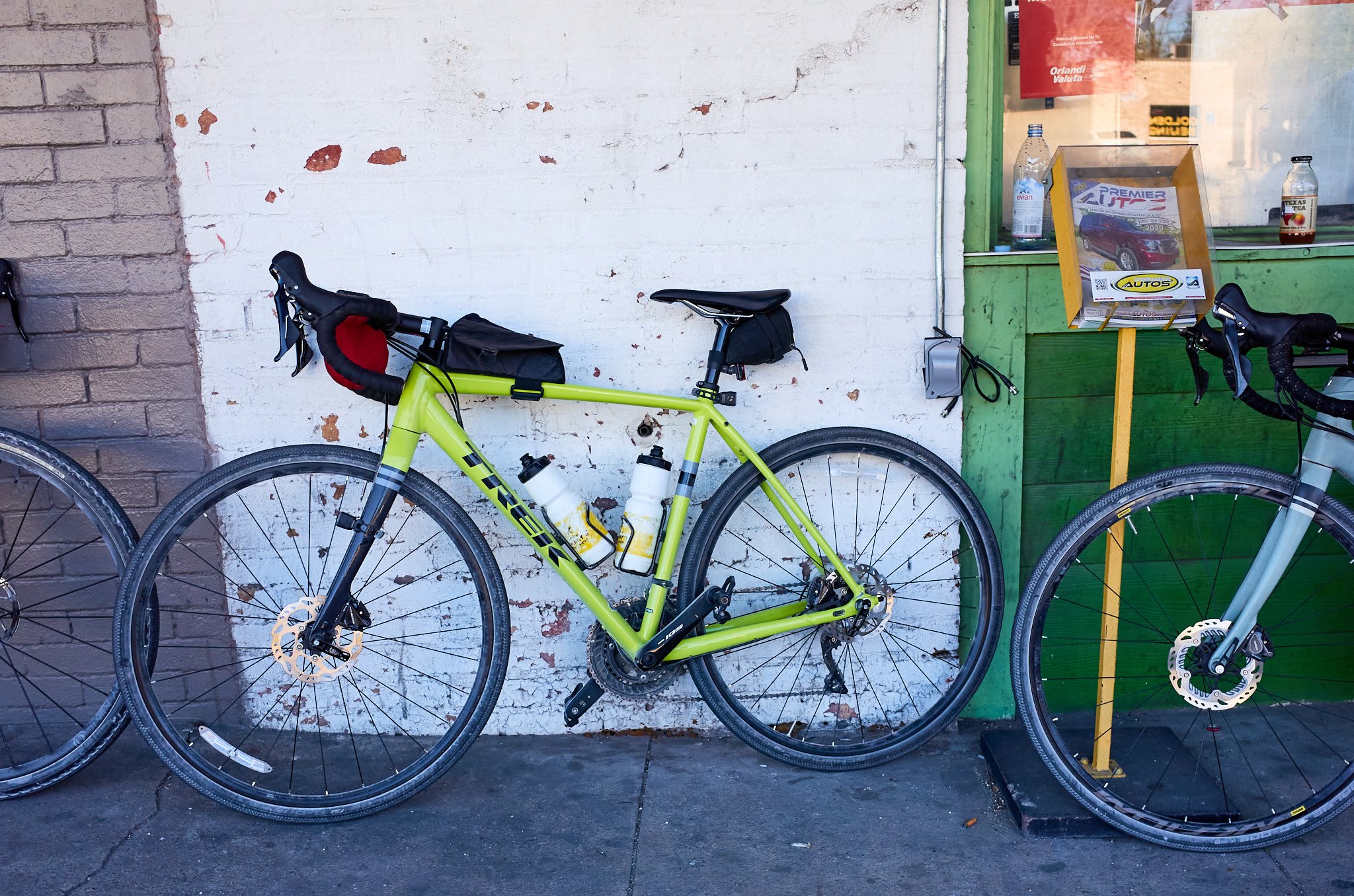
Rental bikes come stock, which usually means all of the factory-installed reflectors are still present, as well as the “dork disk”. Fortunately, I had reason to remove the front reflector to install my computer mount, but the disk remained. I had no choice but to burn with shame for the entirety of the following day.
Morning came. I woke early in order to leisurely prepare, enjoy my coffee and eat something a couple of hours before leaving for the ride. A normal morning was the goal, having mostly prepared the evening before. Following one large oatmeal with peanut butter, two coffees and three pumps to top off my tires to 50psi, I departed home for the four mile journey to the event starting location, where I planned to arrive about 45 early.
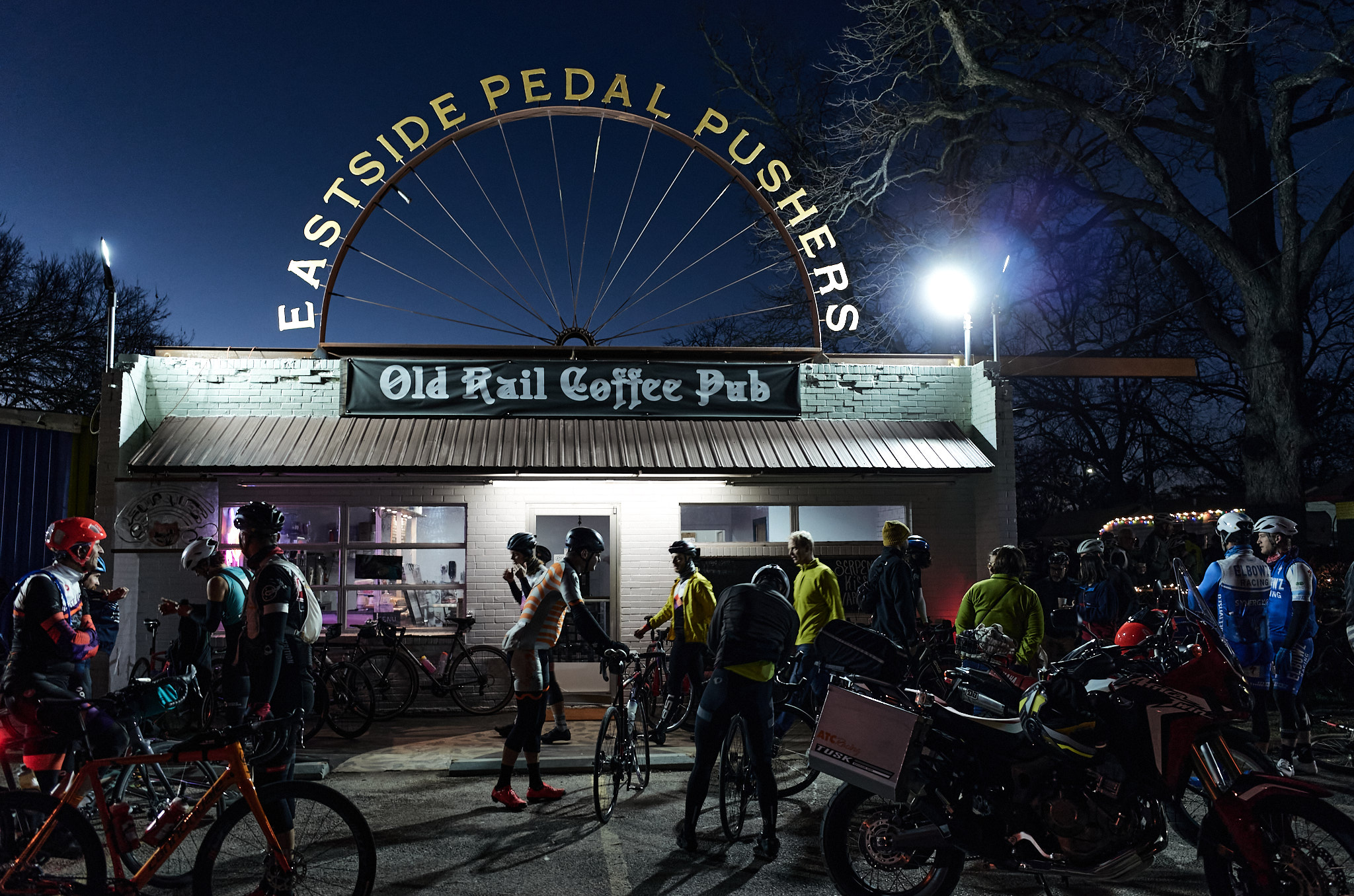
Pre-dawn rides through the city are always enjoyable. The streets are empty. It’s just you and the cats, especially before 6am on a Saturday. On this particular morning, the added presence of the distant blink-y lights of other riders added to the ambiance, crossing in front of me, turning corners behind me, pulling in front, all traveling to the start, alone but together.
At the registration table I paid my entry fee via Venmo, hoarded some free snacks for the road (an amazing selection!) and looked around earnestly in order to appear occupied, as I was apparently the only person who didn’t know anyone.
Some time later, after gawking at the awesome bikes and oogling from a distance an Austin-based World Tour rider who was in attendance, the friend I had planned to ride with showed up. After one more bathroom break and safety announcements, the lead out began: A “neutral” 5-ish mile lead out by motorcycle to get the group away from the city.
This first portion took us through familiar territory going south out of the city. Less familiar for me, though, was traveling this route with a group of 100+ riders. It felt like a roadie Critical Mass event. Knowing the fast groups would take off as soon as the end of the neutral zone was reached, I made sure to stay mid-pack and enjoy the ride before what I predicted would be hours of riding alone.
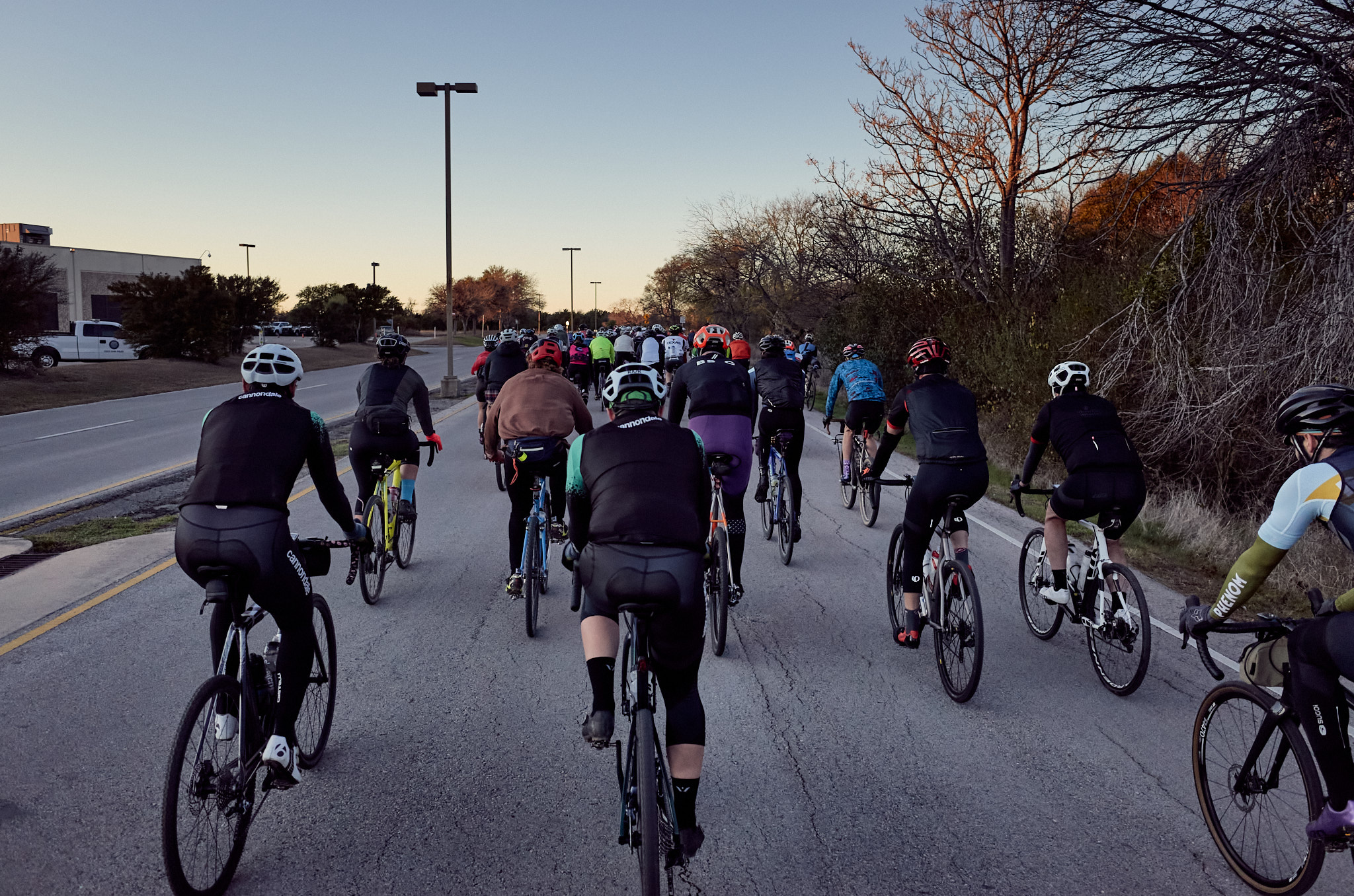
Sure enough, the group thinned quickly as soon as our motorcycle escorts peeled off, and the enthusiasm of some participants caused them to ride well above their fitness, which left me toward the back. I was more measured, and though not particularly strong, knew I’d be seeing many of them again. My riding parter, who is stronger than me, was also caught up in the excitement and, according to my power meter, maintaining a pace I couldn’t possibly match for 110 miles. I told him so and, fortunately, he was generous enough to dial it back before I cracked.
The first time my tires hit gravel, I noted to the rider next to me that this was my first gravel experience. They were kind enough to share some pointers, and on we pedaled, briefly joining and leaving small groups, small groups joining and then leaving us. The social aspect was actually one of the most enjoy able parts of the event. He were all are, strung out over long distances pedaling away. Reports of the locations of other groups were shared, pace lines were formed and broken, beautiful scenery photographed. Interaction made the miles quickly tick away.
Throughout the ride we traveled unpaved farm roads of a type I never new existed in the area. Small lanes through rolling hills, bordered by pastures or farmland on either side. It was some of the most scenic terrain I’ve ever seen on a bike (aided by the beautiful weather), and I found myself lamenting its loss as encroaching sprawl creeps further out of the city. In fact, the graphic for the event depicts a rider outrunning a paver with hills of “tacky-tacky” houses popping up behind it. Such a shame.
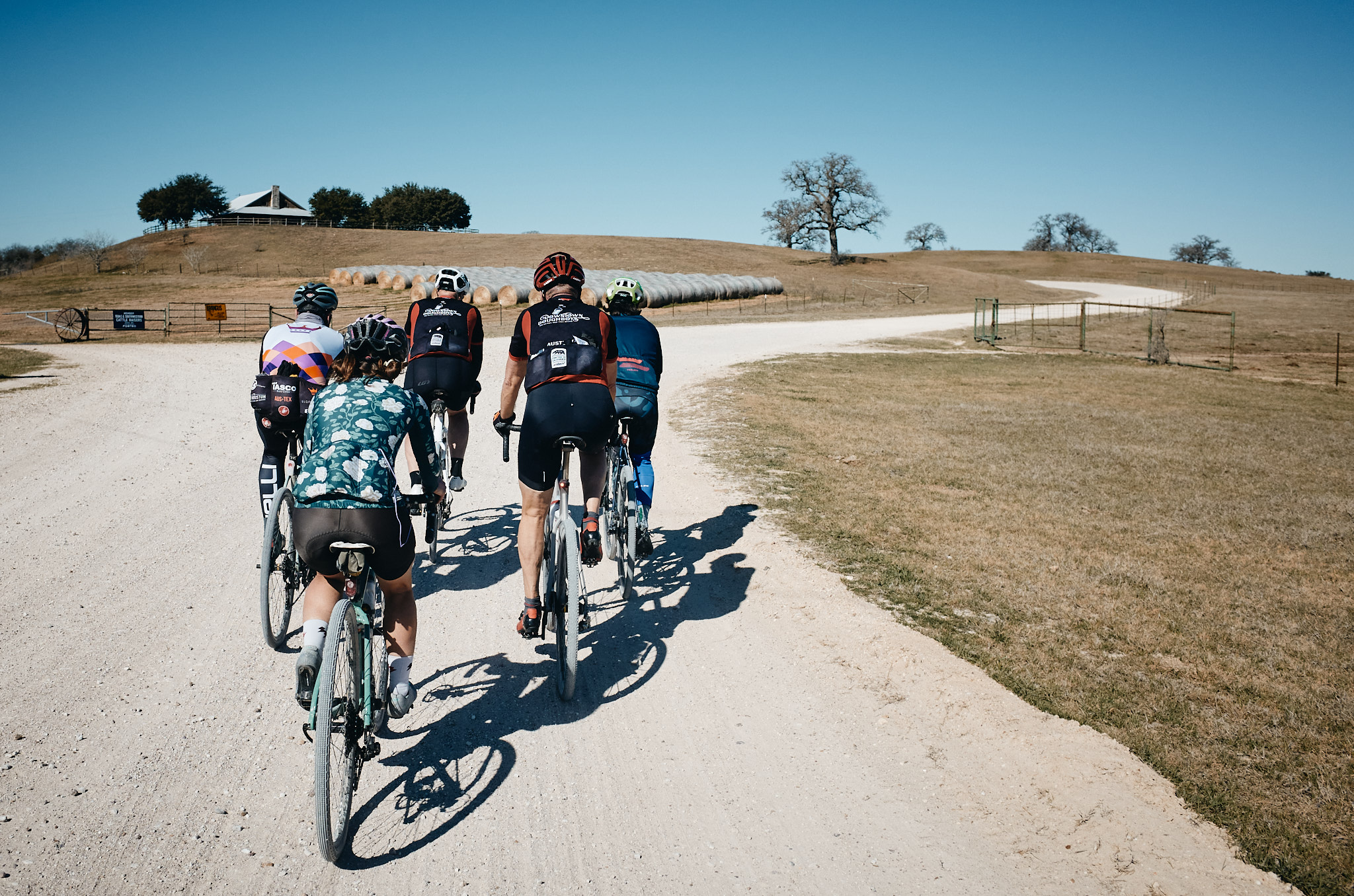
A section of the route required the crossing of a major highway in a populated area, and with it a few roads unfriendly to cyclists. Riding on the large shoulders of Texas state highways isn’t new to me, however, traversing this area also required taking the lane on a high-speed road near an interstate highway off ramp. Having a small group made this easier, but I’ll remember it as one of the sketchiest roads I’ve ridden.
Nearing the end, groups began to combine. I believe we were up to twelve for a short while with a bit of a rotating pace line on paved sections, which certainly helped as I was beginning to tire. Unfortunately, a rider who stuck with us for a large portion of the event was left behind. No hard feelings though, and I’ve ridden with him a couple of times since.
My partner and I found ourselves alone again for the home stretch. One final store stop in a familiar spot to top off my sugar, and we brought it home on an oft-ridden trail leading to town. The ride was essentially “over” for me as we arrived back in well-known territory, as I knew exactly how far we had to go. Amazingly, I was feeling quite strong at the end. My much shorter headwind-cursed training ride felt significantly more difficult.
Incredibly, my Garmin died precisely as I pulled into the parking lot at the end of the ride, crushing my dreams of immediately uploading to Strava. Judging by the progress of the after party, we were probably somewhere in the middle of the group. Welcoming finishers was good beer, hamburgers and the awesome vibe of the Austin cycling community, which is both close-knit, yet big enough to welcome newcomers.
In the days since RRR, I haven’t gleaned any special insights about riding gravel, except that the focus of such events seems to be more on the community aspect than the ride itself. One of my goals for 2020 is to simply “do bikes”, let other things fall away and see what happens, and with the explosion of gravel events, attention from high-level teams and increased local gravel group riding opportunities, I see embracing the genre as a positive, despite the added cost.
Red Rock Roubaix was a fun event, executed flawlessly on a perfect day. The down-to-earth nature of the ride, especially, makes it one by which I’m sure I’ll be measuring many others.
Driveway Returns
Bike racing is back! In Austin, at least. After two…
Race Report: TKMRR
My first opportunity to get dropped came last weekend at…
